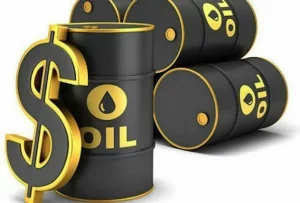
By Habibat Aliu
With EU bans on Russian oil and oil-product exports set to go into effect this year in response to Russia’s ongoing war in Ukraine, emerging market producers are poised to gain larger shares of an evolving market, the Oxford Business Group (OBG) has stated.
EU bans against Russian oil products such as diesel were rolled out earlier this month, following bans on Russian seaborne crude oil exports that began last December.
Minister of State for Petroleum, Timipre Sylva had last year at the Gastech conference in Milan, Italy, said the country was positioned to become a major gas supplier to Europe following the global energy crisis caused by the ongoing conflict between Russia and Ukraine.
He said: “Today we are seeing gas being weaponised and every country will at least require some alternative supply. So, we are positioning ourselves to be an alternative supplier to Europe. We are already working with Algeria to build the Trans-Sahara Gas Pipeline that is going to take our gas all the way to Europe.
“We are also having a partnership with Morocco to extend the West Africa Gas Pipeline to Morocco and across the Mediterranean to Europe.
“We believe that Europe needs this gas and it is a win-win for all of us and it is in their interest to reduce these discriminatory investments that their banks are doing.”
Last week, Patrick Pouyanné, CEO of France’s TotalEnergies, said that there is “no longer a unified oil market… With all these bans, we are creating a grey market for oil.”
While this “grey” market might not be ideal for European international oil companies such as TotalEnergies that still have investments in Russia, emerging markets oil producers in the Middle East, Latin America, and Africa – according to their geography, geopolitics, and the crude grade and oil products that they export – are increasingly finding outlets for their growing levels of production as the markets rebalance.
According to the OBG, countries like Nigeria, historically an exporter to Europe and the Americas, could also play an enhanced role.
Last Friday, the group chief executive of state-owned oil company Nigerian National Petroleum Company Limited, Mele Kyari, announced that its monthly output reached 1.6m bpd, up from under 1m bpd in July of last year, when the country’s exports reached their lowest levels in 25 years due to oil theft.
Kyari had recently blamed low crude oil production on vandalism of oil pipelines which led to theft.
The NBS report came on the heels of the Organization of the Petroleum Exporting Countries Monthly Oil Market Report for January, which showed that Nigeria’s oil rig count had been on an upward trajectory in the last year.
Nigeria’s oil rig count now stands at 13, its highest level since January 2020. As of 2019, Nigeria’s rig count was 16. It dropped to 11 in 2020 and further decreased to seven as of the fourth quarter of 2021. By the first quarter of 2022, it increased to eight, and then 10 by the second quarter of 2022, and then 11 by July 2022, before dropping to nine as of Q3/2022. It had however been on a consistent rise since the fourth quarter of last year.
Similarly, the Nigerian Bureau of Statistics (NBS), in its latest report, said Nigeria recorded an average oil output of 1.3 million barrels per day in the fourth quarter, lower than the daily average of 1.5 million bpd registered in the same quarter of 2021.
The OBG noted that the EU has had little difficulty in sourcing crude oil since it announced the ban last May, as the market had time to prepare for the December implementation.
The largest incremental increase in crude imports in 2022 came from Norway’s Sverdrup field, which added 340,000 barrels per day (bpd) of medium sour grade which is similar to the sour Urals crude that the EU banned from Russia.
Another large increase came from the US, which saw its export volumes increase by 52.2% in the January-September 2022 period and nearly 1.7m bpd in December, the highest level in over two years. US shale production is also set to rise by 75,000 barrels in March to reach a record 9.4m bpd. US domestic demand declined in 2022 due to an economic slowdown, the use of more electric vehicles, and greater fuel efficiency, which has freed up supply for export.
Among emerging markets, Saudi Arabia made the largest contribution by increasing its direct seaborne exports to the EU by 126%, from 4.6m tonnes in 2021 to 10.3m tonnes in 2022. The country’s diesel-rich, low-sulphur crude meets the EU’s demand and grade requirements for both crude oil and oil products.
The Kingdom has long been the largest exporter of seaborne crude oil. Its outgoing seaborne exports rose by 17.2% in 2022 to 362.8m tonnes, with total exports from the Gulf that year growing 12.7% to 879.3m tonnes, accounting for 42.9% of global seaborne crude oil trade.
However, Europe only accounted for 10.7% of total Saudi exports. The bulk of Saudi cargoes that year went to Asia – with the country notching export increases of 14.2% to Japan, 17% to South Korea, 19.2% to India, and 35% to members of the Association of South-East Asian Nations – as it is keen to maintain its market share in Asia and compete with Russia.
In 2022 Russia’s seaborne exports were also up 10.3% to 218.5m tonnes, shipping record amounts to countries like China, India, and Turkey at discounted prices. US exports, meanwhile, rose by 22.3% to 164.3m tonnes.








